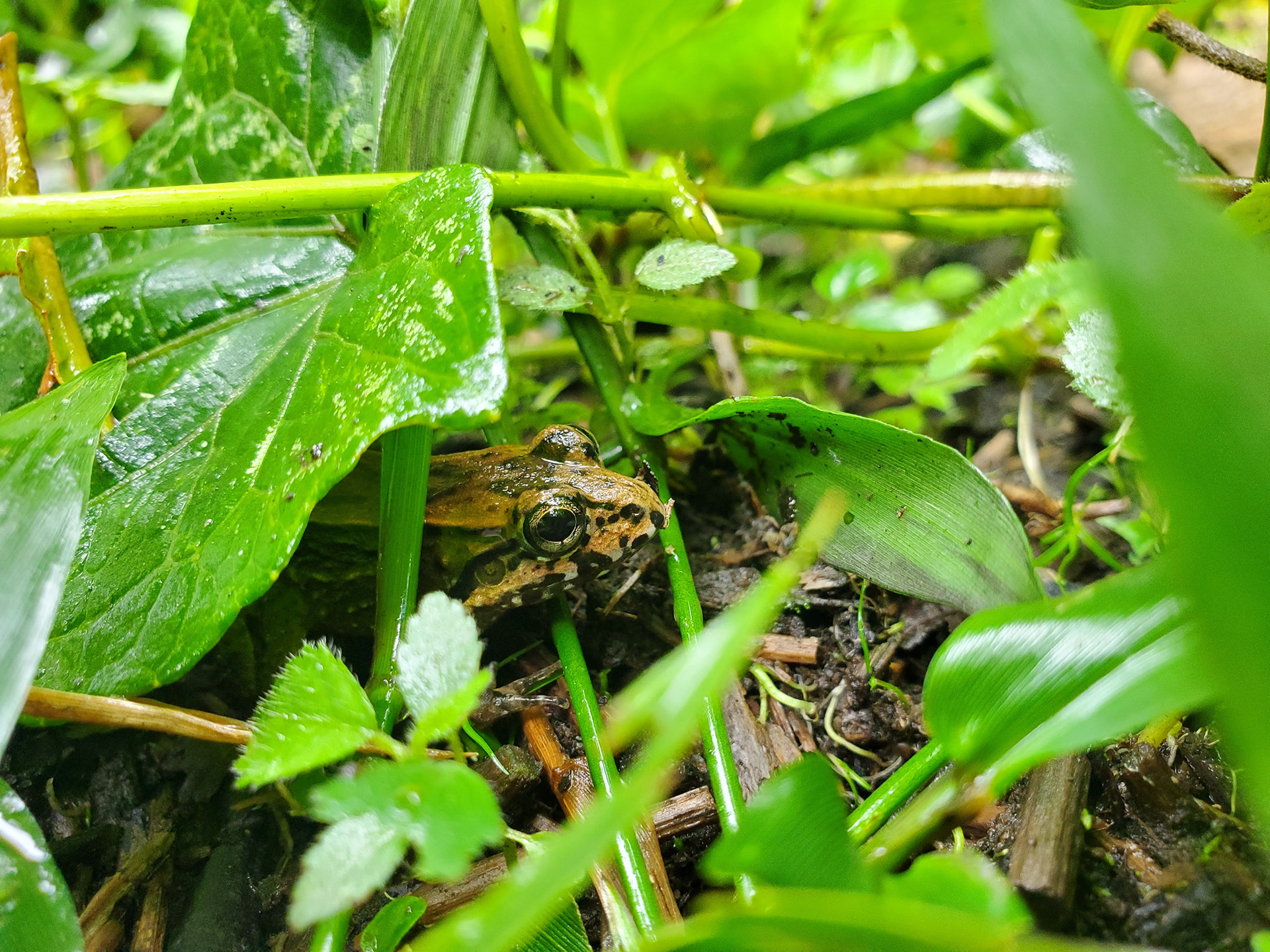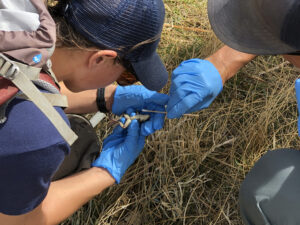
Amphibians like frogs, toads, newts and salamanders are among the most vulnerable animal groups on the planet. A staggering 41% of amphibian species currently face the threat of extinction according to the International Union for Conservation of Nature.
This unsettling trend was the impetus behind Amphibian Week, an awareness campaign launched in 2020 by the Partners in Amphibian and Reptile Conservation. The initiative is backed by a network of state and federal agencies and aims to celebrate all things amphibian.
This year, Amphibian Week runs from Sunday, May 5, to Saturday, May 11. In light of this special occasion, three faculty members share their experiences working in amphibian research.
From local streams to global conservation
Chris Funk grew up in Oregon, surrounded by the lush temperate rainforests of the Pacific Northwest. He spent much of his time exploring local streams and forests, where he often encountered the distinctive frogs and salamanders that thrive in these moist habitats. It was here that his interest in amphibian ecology began to flourish.
“A love of those places and discovering their secret creatures opened the door for what would eventually become my career,” Funk said.
Now a professor of biology and the director of the SoGES Global Biodiversity Center, Funk uses genomic tools to study amphibian conservation. His research spans western North America and extends to tropical regions of South America, where he has discovered four new frog species.
Celebrating Amphibian Week in Fort Collins
Students and faculty are invited to join amphibian-spotting nature walks guided by Katherine Stroh, a master’s student in Chris Funk’s lab and the Graduate Degree Program in Ecology. These “herp walks” will take place on Wednesday, May 8, and Saturday, May 11, from 7:30 p.m. to 10 p.m. in the CSU Environmental Learning Center. Participants will learn about amphibian conservation and explore the diversity of amphibians in Fort Collins.
His work broadly focuses on the ecological and evolutionary processes that drive and maintain biodiversity. This helps inform conservation policies that aim to protect amphibians in the face of threats like climate change, habitat loss and disease.
Amphibians are sensitive to environmental changes and pollutants, partly because their permeable skin readily absorbs toxins from air and water. In places where amphibians thrive, the surrounding environment tends to be in good shape. This makes them instrumental for researchers trying to understand the impacts of environmental change.
“Amphibian conservation is about a lot more than just amphibian conservation, it’s a way to address larger problems that affect humans and the rest of nature,” Funk said. “If an environment is healthy for amphibians, it’s also probably healthy for humans.”
Protecting species through collaboration

Larissa Bailey, professor in the Department of Fish, Wildlife and Conservation Biology, has also dedicated much of her career to amphibian conservation. This was not always her plan – she initially intended to focus on carnivores for her Ph.D. but had to switch gears when the project fell through.
She was offered the opportunity to work on salamanders in the southern Appalachians and quickly became fascinated with these diverse creatures and their habitats. Bailey now collaborates with local organizations and agencies to protect native amphibian species in the United States, primarily in Colorado and Wyoming.
Using quantitative ecology methods, she seeks to understand and measure the threats that endangered species face. She then uses that information to inform conservation management actions for agencies like the Bureau of Land Management, the National Park Service and Colorado Parks and Wildlife.
“Amphibians have such diversity and amazing life histories, and they are typically understudied and underappreciated,” Bailey said. “They are definitely a taxa worth spending your career trying to protect and recover.”
Uncovering spectacular biodiversity

Biology Professor Rachel Mueller loves studying amphibians because of the evolutionary puzzles they present. Amphibians are incredibly diverse, and they encompass species with some of the most variable genomes and cell sizes among all vertebrate animals.
Mueller is particularly interested in understanding why some amphibians possess enormous genomes and cells despite their small body sizes. Some salamander species have 40 times more DNA in their genomes than humans have. Solving genetic mysteries like this helps to shed light on the evolutionary trajectories that shape biodiversity.
“Amphibians have so much to teach us about how life evolves, persists and thrives on our planet,” Mueller said. “They are a beautiful manifestation of genetic and morphological diversity, behavioral diversity and reproductive diversity.”
Her lab aims to uncover and understand this diversity using a combination of bioinformatic techniques, microscopy and mathematical modeling. Ultimately, understanding the rich biodiversity of amphibian species underscores the importance of protecting them.
Across their spectacular diversity, amphibians play central roles in balancing ecosystems. They occupy key positions in food webs, acting as key predators for insects, controlling populations of mosquitoes and other disease vectors, and serving as prey for innumerable birds, fish, snakes and mammals. Beyond their ecological importance, amphibians hold medicinal and cultural value worldwide.
“Each species is a lens through which some secret of life can be revealed if we have the patience and curiosity to look closely,” Mueller said. “Life is better with amphibians around!”